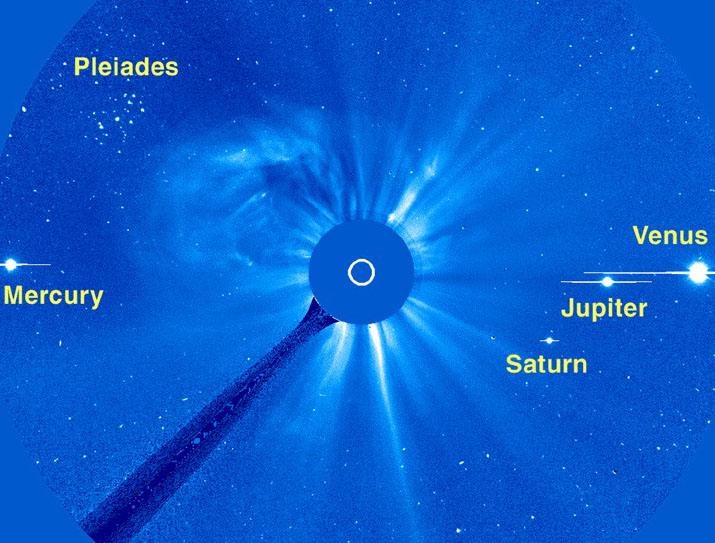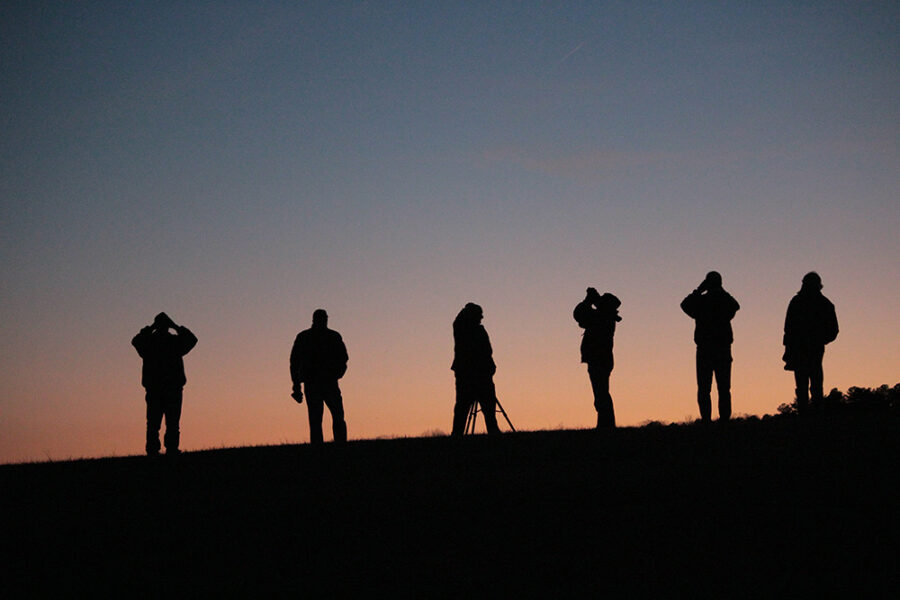With the help of the Solar Heliospheric Observatory, you can not only keep track of the planets in the daytime sky but maybe even discover a comet.
 |
| The Solar and Heliospheric Observatory can photograph rare events that can't be seen from the ground, like this grouping of four planets and the Pleiades near the Sun that happened on May 15, 2000.ESA / NASA / SOHO |
|
|
Nature is replete with rhythms. Earth spins, planets revolve, variable stars pulsate, and the moon waxes and wanes. Many of us watched Jupiter and Saturn squeeze together during the recent Great Conjunction, then followed them until they disappeared in the solar glare in January.
source https://skyandtelescope.org/astronomy-news/planets-and-comets-cant-hide-from-sohos-eye/











